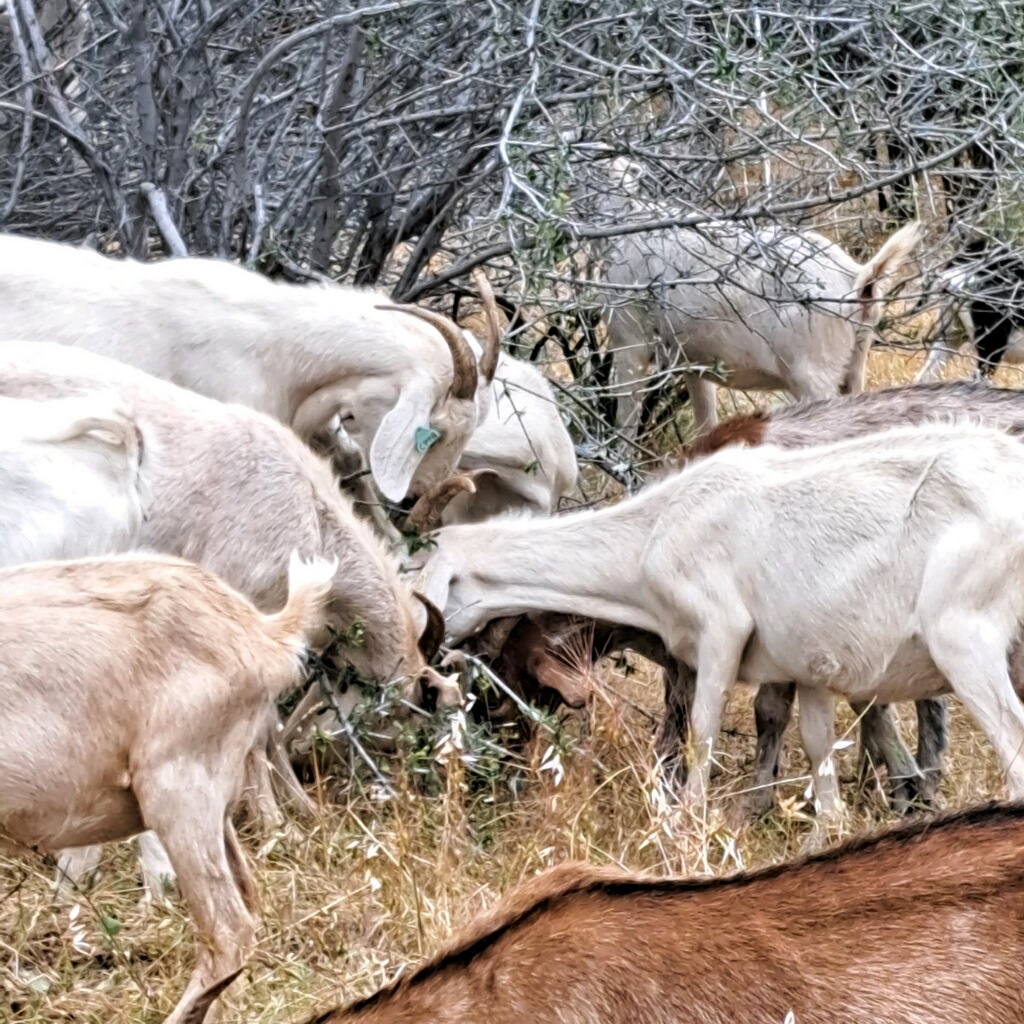The GOAT in Wildfire Prevention
Whether you’ve watched the clips, read the articles or stepped outside into a haze of well-traveled smoke, you can’t miss the historic wildfires burning in Western Canada. And if you’ve tuned in to news media lately, you may have also heard of Tim Arrowsmith.
Arrowsmith is the owner/founder of the Red Bluff, CA company “Western Grazers”. Their “grazers” are goats, which happily eat brush and other wildfire fuels. Lately, goat herding has been a hot topic around California—leading some to believe that, unlike the threat of wildfires, Tim and his fellow goat herders might be diminishing in the coming months.
OVER THE MOUNTAINS AND THROUGH THE TOWNS
Tim grew up on a ranch in Red Bluff, California. In his twenties, he traded his muddy boots for patent leather shoes, electing to work in the financial sector. After several decades pushing paper, he decided to return to his roots and become a goat farmer at the young age of 50. He started with just 5 goats.
Now, he has thousands.
“95% of the work we do is fire abatement,” Tim explains. “We use Kiko goats because they are aggressive brushing goats.” Tim and his hungry band of four-legged browsers operate around the Northern California region, which is intimately familiar with the devastating effects of wildfires. “Paradise, Greenville, Sonoma County—these communities have either completely or almost completely burned to the ground in recent years,” Tim laments. “Goats can help.”
Goats are a logical choice for this type of work. They are “browsers”, meaning they prefer dense brush and vegetation over grasses. And this is a crucial point, because you know what else prefers dense brush to grass? Wildfire. With all the technology and research that has gone into wildfire mitigation techniques, goats still accomplish a tremendous amount of wildfire abatement compared with human efforts—be it mechanical or chemical. And goats require little to no training or specialized equipment. They also accomplish far more than just clearing brush.
Goats…
- Aerate the soil with their hooves, strengthening it and preventing erosion;
- Crush seeds of targeted plants, preventing further spread of dangerously combustible brush;
- Replenish the soil with natural fertilizers. Just a 1% increase in organic matter in the soil can hold an additional 16,500 gallons of water per acre;
- Reach brush located in spots that are dangerous and difficult for humans to safely and effectively clear;
- Can consume as much as 3 times their body weight in brush and other vegetation;
- Eliminate the need for pesticides and other chemicals to hamper the spread of fire fuels.
And they do all this with a carbon neutral footprint—or should I say “hoofprint”—while remaining incredibly adorable. “Cities always get a good PR boost when my goats come into town,” Tim explains. “It’s a win-win.”
THE GOOD AND THE BAA-AAA-AAD
With all the benefits listed above, arguably the important function goats serve is their ability to safely address the need for fire fuel mitigation in areas known as “Wildland Urban Interface”; areas that are too dangerous for controlled burns due to the proximity to urban or suburban environments. Experts agree that the impact of wildfire season is often measured on the impact to the public and not just in acreage burned. In 2018, the town of Paradise, California was burned to the ground, killing 85 people and forced thousands more from their homes. In 2021, the small mountain town of Greenville, California was also destroyed. In Oregon, at least 5 towns were “substantially destroyed” by wildfire in 2020. Santa Rosa, California in 2017. The Tahoe region in 2021. The list—and the risk—just keeps growing.
Unfortunately, experts are predicting we may see one of the most challenging wildfire seasons to date in 2023. Increased precipitation rates in spring and early summer lead to intense growth of goat food—fire fuels to you and me. That, combined with higher temperatures and more frequent summer storms with the likelihood of lightning strikes creates a potentially deadly recipe. Canada is experiencing a historic wildfire season, with air quality impacts across the United States and even Europe. Homeowners in California face a compounding problem. Several major insurance agencies—namely State Farm and Allstate—are now refusing coverage for new builds in the state. The federal government has increased funding for wildfire prevention as part of a Bipartisan Infrastructure Law. There is a clear need for efficient and effective wildfire mitigation practices across the nation and north of our borders.
Sadly, goat herders in California face a severe threat—one that could effectively wipe out the entire industry in The Golden State. The labor law, which would take effect January 1, 2024, reclassifies goat herders from sheep herders to farm laborers. This means instead of being paid monthly for their 24/7 availability to the herd, employees would be paid hourly. According to Arrowsmith and the California Farm Bureau, this would take their pay from around $4,000 per month (Arrowsmith also supplies his workers with free housing, groceries, clothing and cell phones), to over $14,000 overnight(1). And unlike using goats to clear brush, that is unsustainable for small companies like Arrowsmith’s. “If things don’t change, we’ll be finished and the goats will go to slaughter and I’ll be looking for another job along with my workers. Cities can’t absorb those costs either” Tim explains. “It’ll probably be the end of using goats for this type of work, and that’s a real loss”.
References
(1) Toohey, Grace (2023, June 1). Grazing goats prevent California wildfires. New salary rules may jeopardize the industry. The Los Angeles Times. https://www.latimes.com/california/story/2023-06-01/california-goat-herders-wage-increase-fight-wildfires#:~:text=Instead%2C%20employers%20will%20be%20required,for%20farmworkers%2C%20plus%20required%20overtime.
(2)Marcos, Coral M. (2021, September 18). The Unconventional Weapon Against Future Wildfires: Goats. New York Times. https://www.nytimes.com/2021/09/18/business/wildfires-goats-prevention.html





